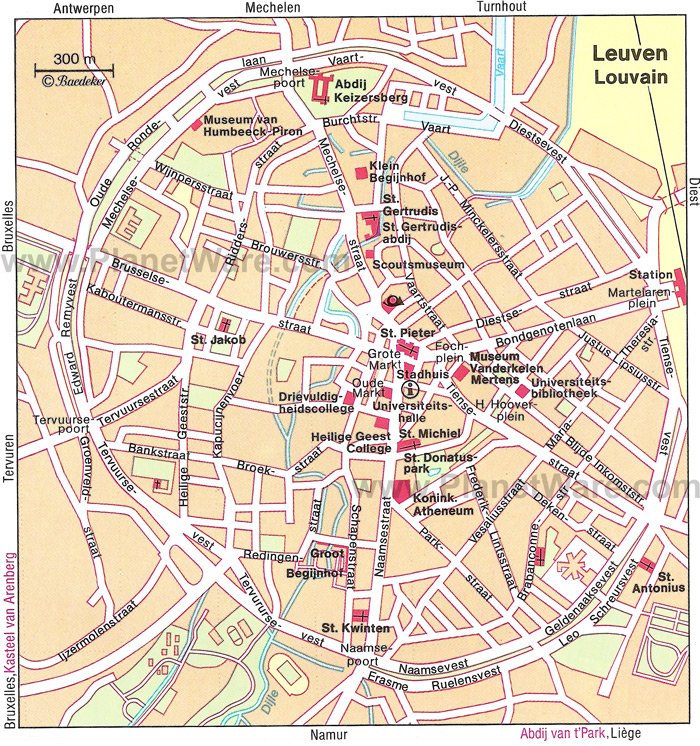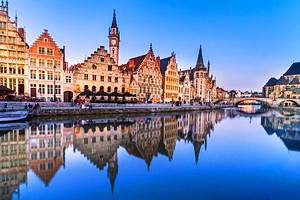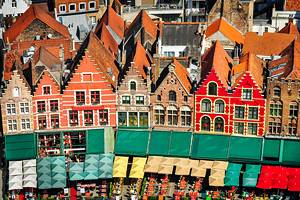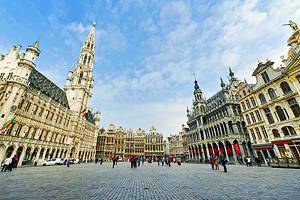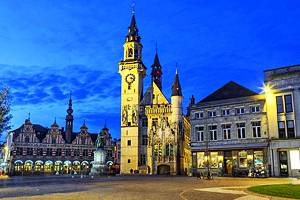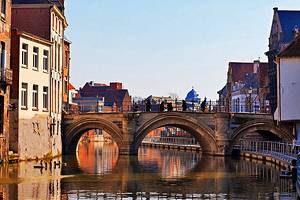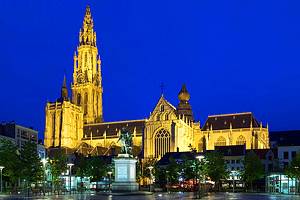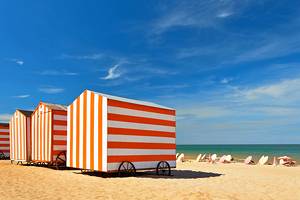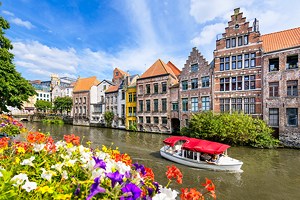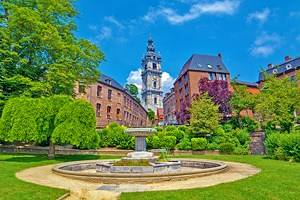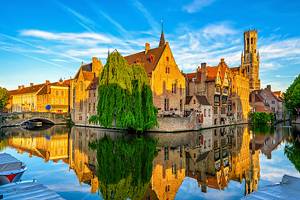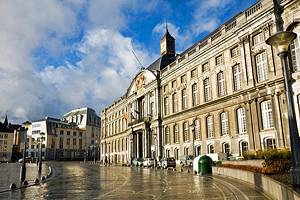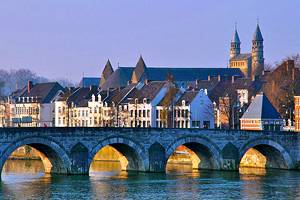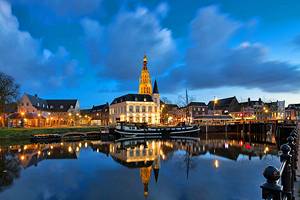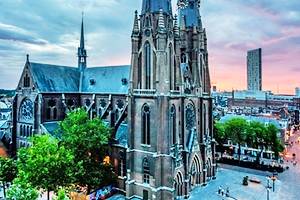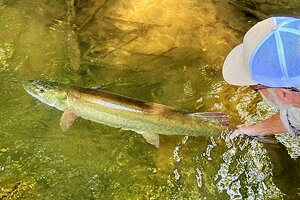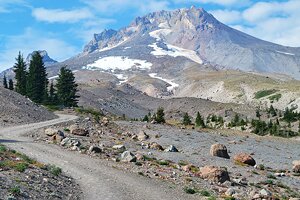12 Top-Rated Attractions & Things to Do in Leuven
Belgium's most famous university town, Leuven (in French Louvain) has a charming position beside the banks of the Dijle, east of Brussels. The Catholic university here was founded in 1425 and rose to prominence as one of Europe's most highly regarded places of learning.
The great humanist Erasmus of Rotterdam and Justus Lipsius both taught here, the geographer Gerhard Mercator studied here, and one of the university's chancellors became Pope Adrian VI in 1459.
Leuven has also been lucky enough to hang on to much of its early architecture, despite suffering heavy bombardment in both world wars. With its illustrious university college buildings and fine Gothic buildings in the city center, Leuven is one of the best places in the country to get to grips with Belgium's architectural heritage.
Plan your sightseeing with our list of the top attractions and things to do in Leuven.
- 1. St. Peter's Church (Sint-Pieterskerk)
- 2. Tour Leuven's Town Hall
- 3. Visit the Groot Begijnhof
- 4. Stroll through Botanical Garden Kruidtuin
- 5. Explore the Art Collection at M-Museum Leuven
- 6. Visit Naamsestraat and the University Buildings
- 7. Climb the Belfry of the University Library
- 8. Stop at a Café in Oude Markt
- 9. Take the Kids to Kessel-Lo's Park
- 10. Explore Abbey Park
- 11. Day Trip to Chateau de Merode
- 12. Visit Louvain-la-Neuve
- Where to Stay in Leuven for Sightseeing
- Map of Attractions & Things to Do in Leuven
1. St. Peter's Church (Sint-Pieterskerk)
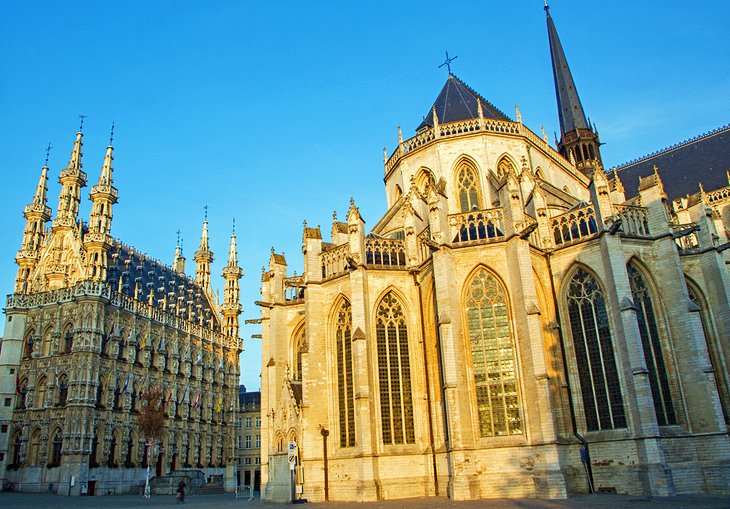
Standing in the middle of the Grote Markt is St. Peter's Church, one of the best examples of Brabant Gothic architecture in Belgium.
The main nave's notable features are its straight line of sheaf pillars and high-pointed arch windows. Among the treasures in this part of the church are the late Gothic brass font in the chapel, to the left of west gate, and the splendidly carved Baroque pulpit of 1742.
The choir and ambulatory have been converted into a Museum of Religious Art (Stedelijk Museum voor Religieuze Kunst), which is operated by the M-Museum Leuven.
Here, you can see the outstanding Last Supper by Dirk Bouts, painted from 1464 to 1468. The supper takes place in a Gothic hall, and the figures are arranged around Christ; unlike many representations, the betrayal of Judas is not in the foreground, instead it is the symbolic Eucharist, as also portrayed in the side panels.
Address: Grote Markt, central Leuven
2. Tour Leuven's Town Hall
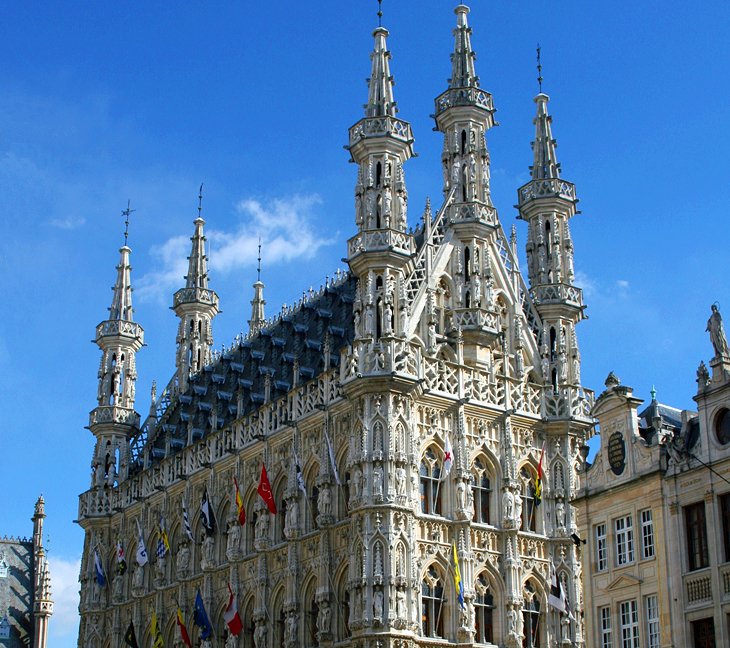
Leuven's over-the-top, ornate Town Hall (Stadhuis) is the city's most distinguishing landmark and one of its most famous architectural tourist attractions.
Three rows of sculpture adorn the main facade and both side facades, showcasing 236 figures, added in the 19th century, which represent eminent personalities throughout the town's history.
The roof, meanwhile, is richly decorated with small turrets, while along the niche bases, you can see biblical reliefs that date from the original medieval building of the hall.
You can visit the interior on a guided tour. Inside, it is no less decadent in style. In particular the Great Gothic Council Chamber with its carved beamed ceiling dating from the 15th century and the Small Gothic Hall with a Gothic vaulted wooden ceiling are both noteworthy.
Address: Grote Markt, Brusselsestraat 63, Leuven
3. Visit the Groot Begijnhof
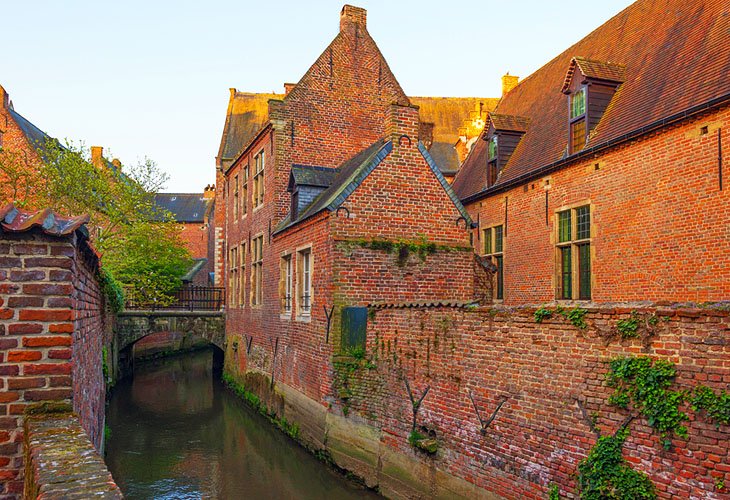
Leuven's beautiful béguinage (known as the Groot Begijnhof), where hundreds of béguines once lived a simple, nun-like existence, is the town's most enchanting area.
This romantic complex, traversed by a tributary of the Dijle, was founded in the 13th century, and today comprises more than 1,000 houses and a church; earlier it encompassed a hospital and a farmhouse.
In the 18th century, when 300 béguines were still living in the béguinage, the houses were renovated with stepped gables, mullions, and transoms, but the French Revolution brought a temporary halt to life here, and only a few béguines returned afterwards.
In 1962, the site was bought by the university and underwent extensive restoration to create student residences and lecture halls. Only the second cottage on the right past the entrance is still furnished as it was when the last béguine died in 1988.
The early Gothic béguinage church Sint-Jan-de-Doper, built in the 13th to 14th centuries, today serves the university community as a place of worship
Address: Schapenstraat, central Leuven
4. Stroll through Botanical Garden Kruidtuin
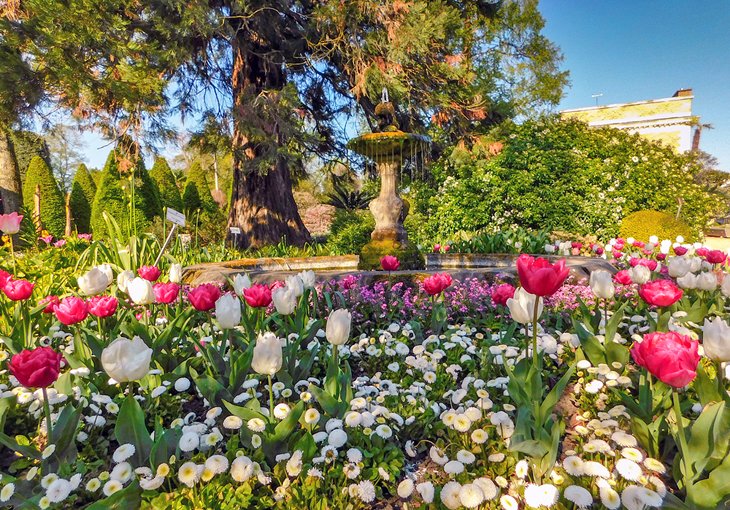
The oldest botanical garden in Belgium, this beautiful natural space was first created in 1738 for the students of the University of Leuven as a medicinal plant garden for their school of medicine. Its name, Krudituin, translates to "herb garden," and visitors will still find many medicinal herbs present today.
The large greenhouse is now home to a variety of plants, including exotic subtropical and tropical species, as well as aquatic plants and cacti.
The outdoor gardens feature flowers and plants that thrive in Leuven's climate, and are also home to bees and chickens, which help the ecosystem to thrive naturally.
The gardens and greenhouse are open daily, free of charge.
Address: Kapucijnenvoer 30, 3000 Leuven
5. Explore the Art Collection at M-Museum Leuven
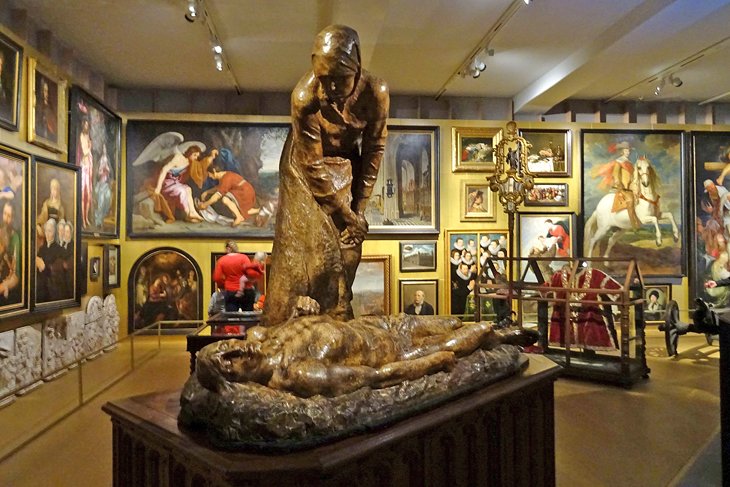
Built on the site of the former Vanderkelen Museum, the M-Museum includes the contents of this municipal art and craft collection, as well as a wide range of classical and contemporary art from around the world.
The museum's collections include over 52,000 objects, including sculpture, paintings, photography, video, ceramics, glasswork, engravings, textiles, and metalwork. The museum also hosts performances throughout the year including dance, theater, and music, as well as temporary visual arts exhibitions.
The M-Museum's roof terrace is the ideal place to visit for panoramic views of the city, and there is a lovely central courtyard.
Address: Leopold Vanderkelenstraat 28, 3000 Leuven
Official site: https://www.mleuven.be/en/home
6. Visit Naamsestraat and the University Buildings
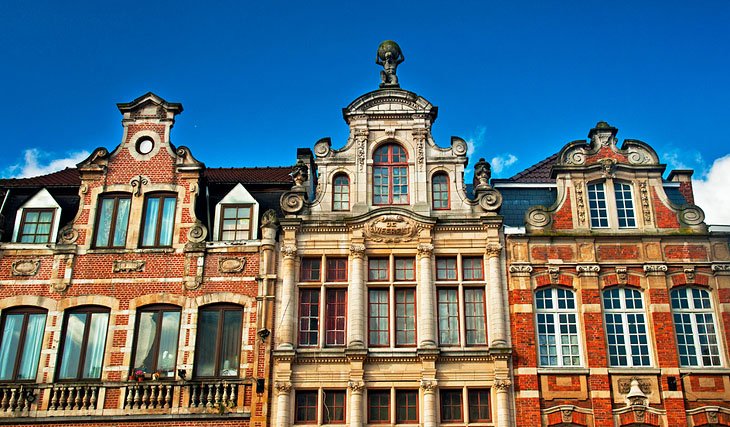
To the right of Leuven's Town Hall is Naamsestraat, where many university buildings are found, either on this street or nearby. In particular, the most notable are college buildings funded by various patrons from the 15th to the 18th centuries.
Look out for King's College (Koningscollege No. 59), founded by Philip II of Spain in 1579; the Premonstratensian College (College van Promonstreit No. 61), founded in 1571; and Arras College (No. 63), founded in 1508 by the future Bishop of Arras.
St. Michael's Church (Sint-Michielskerk), built 1650-1666 by Willem Hesius, is also worth a look for its splendid Baroque facade, renowned as one of the finest of its kind in Belgium.
Another spectacular building that is now part of the university is Arenberg Castle (Kasteel van Arenberg), a magnificent building built between the 14th and 16th centuries. It is located just outside the main campus at Heverlee, surrounded by beautifully landscaped gardens right on the Dijle. The château itself has two striking corner towers with gabled roofs and was built in traditional late Gothic style with Renaissance features.
Address: Naamsestraat, central Leuven
7. Climb the Belfry of the University Library
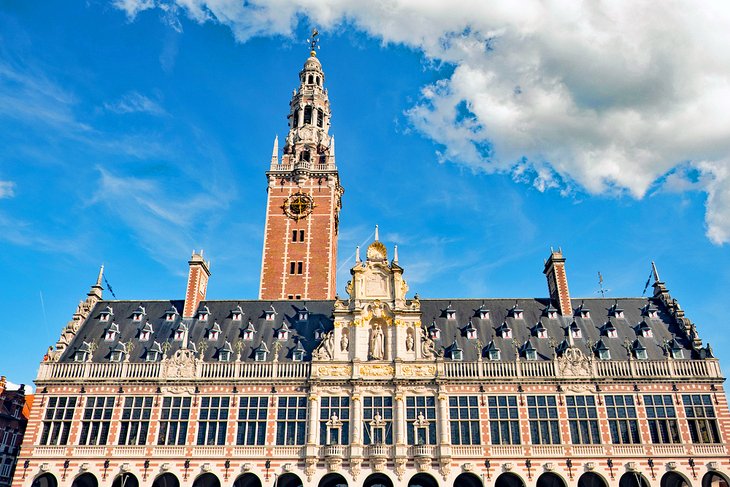
Leuven's University Library building is one of the city's finest buildings. Originally the library was located in the town's Cloth Hall, but during World War I, German soldiers burnt the building down, and this new building, with a belfry, was built after the war to replace it.
In World War II, the building was yet again destroyed by the occupying German forces, and the building you see before you today is an exact replica of the post-World War I library, rebuilt as a symbol of Leuven's resilience after World War II.
Today it is home to the university's Humanities library, and visitors can tour the library by audio-guide and climb to the top of the belfry tower.
In the belfry tower, there are exhibits on the building's history, and there are excellent views of central Leuven from the balcony at the top of the belfry.
Address: Ladeuzeplein 21
8. Stop at a Café in Oude Markt
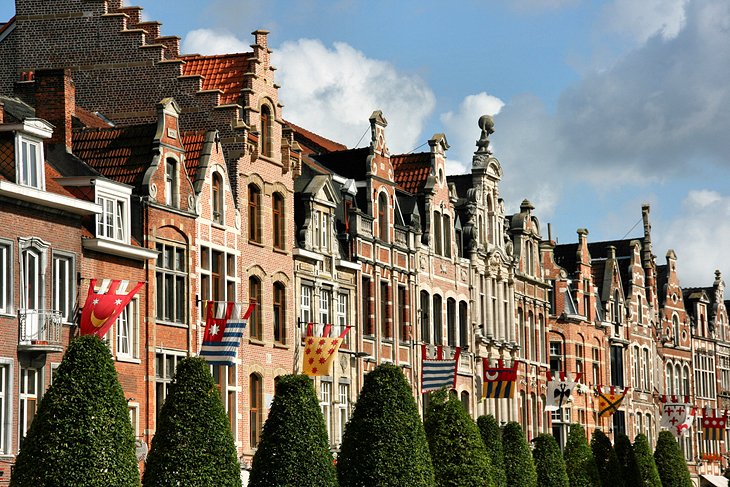
Not far to the west of Naamsestraat is the Oude Markt, the bustling old square of the city, which is still the center of Leuven. The entire plaza hums with energy. If you are looking for things to do on a summer evening, this is the place to come.
Although its historic brick gabled houses were almost completely burned down in 1914, they have been beautifully rebuilt and now accommodate many cafés and restaurants, which are the perfect pit stop for a coffee break while exploring the central city.
A bronze sculpture here commemorates the "Kottmadams" of Leuven, the landladies of the student rooms.
On the narrow south side of the square is the Holy Trinity College (Collegium Vauxianum (Heilig Drievuldigheidscollege) with a glorious Baroque facade dating to 1657.
Address: Oude Markt, central Leuven
9. Take the Kids to Kessel-Lo's Park
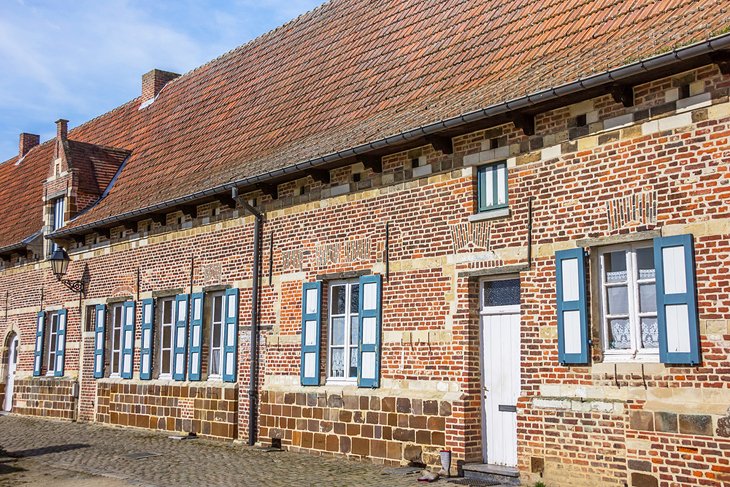
The borough of Kessel-Lo, about four kilometers northeast of central Leuven, is best known for its expansive Kessel-Lo Provincial Domain park, open free of charge and full of outdoor activities for all ages.
Highlights include a small zoo with a petting area, swimming pools, adventure playgrounds, and a museum dedicated to water conservation.
Visitors can also enjoy the lakes, and paddle boats are available for rent.
The town of Kessel-Lo is also noted for its wonderfully preserved Benedictine Abbey (Vlierbeek Abbey) built in 1125. The abbey was destroyed by the troops of William of Orange in 1572, and it was several decades later before it was rebuilt and the Benedictine community once again lived here.
The main and adjoining buildings you see today were built from 1642 to 1730, while the abbey church followed later being built between 1776 and 1794.
10. Explore Abbey Park
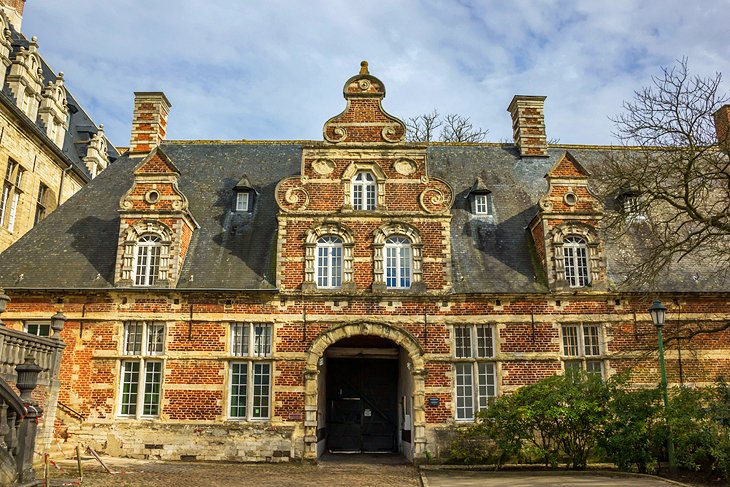
About 4.5. kilometers southeast of Leuven lies the gloriously peaceful Abbey Park (Abdij t' Park), founded by Gottfried the Bearded in 1129 and once home to a monastic community. Most of the buildings standing today date from the much later 16th to 18th centuries.
You enter through a grand gateway, passing a windmill on the way to the prelate's house. From here, you can explore the former abbot's palace and the chapter house, with its mixture of Gothic and Renaissance styles.
The library building and the refectory, which both have fine stucco reliefs, are also worth checking out. The monastery church is of 12th- to 13th-century origin, being redesigned in the 17th to 18th centuries.
11. Day Trip to Chateau de Merode
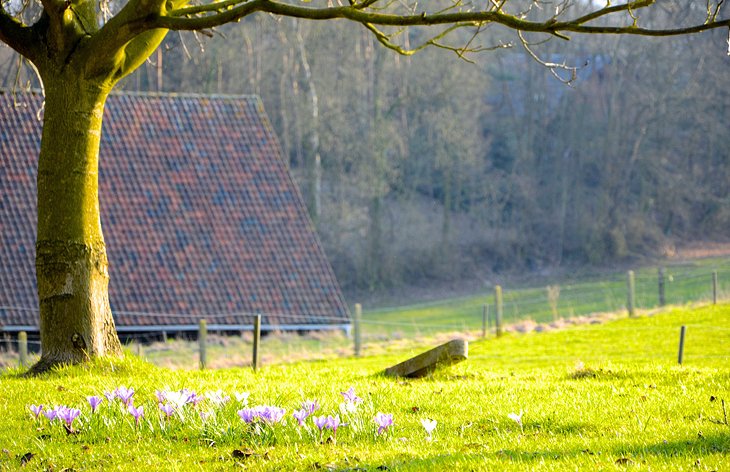
The township of Rixensart, 31 kilometers southwest of Leuven, is worth a visit for the pretty red brick Château de Mérode that was built between 1631 and 1632.
The building, with its four corner towers, is open to the public, and a tour through the interior reveals an eclectic range of furnishings, including Gobelin tapestries, Louis XV pieces, pictures (including some by Nattier and Tischbein), as well as a collection of weapons that the French mathematician Monge brought back from Napoleon's Egyptian campaign.
A little outside Rixensart lies the Lac de Genval, renowned for its lakeside restaurants and good fishing. It's a favorite rendezvous at weekends for locals from Brussels, as well as Leuven.
The surrounding countryside here is the stuff of picture-perfect, old-fashioned bucolic landscapes – the perfect respite to time spent amid the architectural finery of Belgium's towns and cities.
12. Visit Louvain-la-Neuve
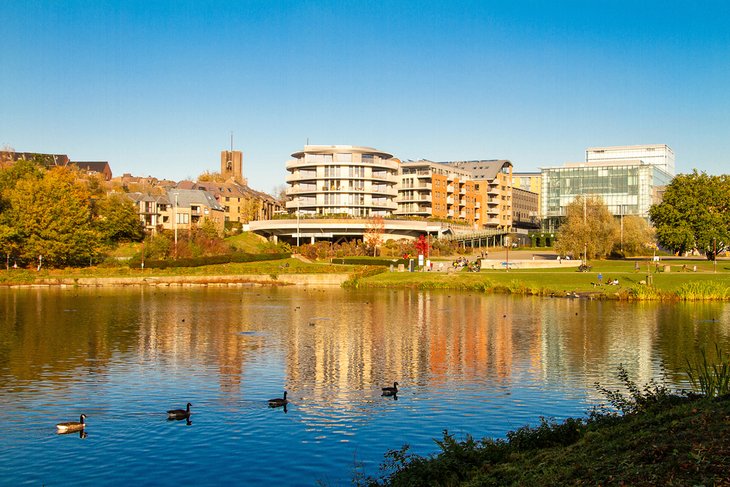
The university town of Louvain-la-Neuve is a product of the conflict between the Walloons and the Flemish, which reached its zenith in 1968 when the Flemish expelled their Walloon colleagues from the Catholic University of Leuven. The Walloons then founded this university town here in the French part of Belgium, naming it Louvain-la-Neuve ("New Leuven").
Although there aren't many tourist attractions, it's interesting to see how architects tackled the project for the first newly set up town in Belgium since the foundation of Charleroi in 1666. Their vision to recreate the intimate character of a medieval town hasn't been quite achieved, and today this town, which was conceived for 35,000 people, has a population of about 4,500 permanent residents and 18,000 students.
The main square holds the university hall, the Church of Staint-Francois d'Assise and the Museum of the Archaeological and Art History Institute displaying sculpture from the 12th to the 18th centuries.
Louvain-la-Neuve is about 48 kilometers south of Leuven.
Where to Stay in Leuven for Sightseeing
Luxury Hotels:
- Housed in a former 16th-century convent, Martin's Klooster Hotel is a four-star facility located close to the Botanical Garden, Old Market Square, and Leuven's Town Hall. Many rooms retain the historic building's original features, and all include a desk and safe. Hotel amenities include breakfast, laundry service, free internet, and bicycle rentals.
- Novotel Leuven Centrum is a four-star hotel that sits on the outer edge of the city near the train station, close to Kessel-lo. This modern hotel is an excellent choice for families, where kids under 15 stay free and there are on-site activities, including a kids' club and game room. Four-footed family members also welcome, and family rooms and suites are available. Other amenities include free Wi-Fi, a buffet breakfast, and a fitness center with a sauna.
Mid-Range Hotels:
- The bright and modern Park Inn by Radisson Leuven is located next to Central Station, conveniently connected via a pedestrian bridge. In-room amenities include coffee & tea, safes, desks, and soundproofing to ensure that the nearby train station doesn't disturb guests. This non-smoking hotel has a fitness center, a restaurant with room service, and a concierge.
- Pentahotel Leuven is an excellent mid-range hotel for families, offering kid-friendly TV networks, a game room, and babysitting services. This quirky, trendy hotel also has a billiards room, coffee shop, and restaurant, and offers walking tours and bike tours of the city; it is located close to the University Library and Bell Tower, as well as a huge variety of restaurants.
Budget Hotels:
- Leuven's most dependable budget hotel is the Ibis Leuven Heverlee, situated just outside of the city near Arenberg Castle and an excellent choice for tourists who have a vehicle. This non-smoking hotel is housed in a beautiful modern building and offers free parking and Wi-Fi, as well as breakfast; the in-house restaurant has a spacious outdoor seating area.
Map of Attractions & Things to Do in Leuven
More Related Articles on PlanetWare.com
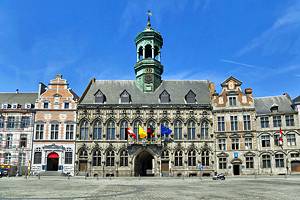
Belgium's Hidden Gems: Like Leuven, the city of Mons (or Bergen, in Flemish) may not be as well-known as some of the more touristy cities but it is well worth a visit for those interested in architecture and history. Tourists who want to explore another lesser-known Flemish city will enjoy exploring the historic attractions in Namur (Namen), like the old Citadel, Central Old Town, and its numerous historic churches.
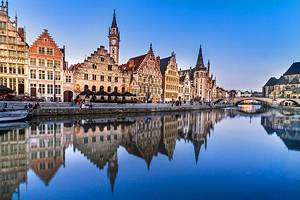
Romantic Ghent: The old Flemish city of Ghent is known best for its beautiful architecture and laid-back atmosphere. Free from droves of tourists, couples and seclusion-seekers can enjoy exploring via canal boat, admiring the historic buildings from the water.
